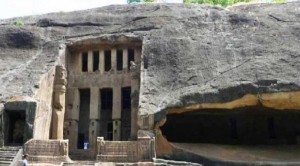Seven Buddhist caves have been discovered at Sanjay Gandhi National Park, Borivli (Mumbai) in India, in January 2016. The caves are discovered in the north fringes of the city.

About the Caves
- The caves are assumed to be at least 2,000-years old.
- The caves are possibly dated between the 1stcentury B.C. and 5th -6th century A.D that is before Kanheri Caves.
- Firstly the team discovered five of the seven caves in February 2015.
- The discovery team composed of researchers from the Centre of Archeology, Department of Ancient Indian Culture, Sathaye College and Mumbai University.
- These caves are believed to be Buddhist viharas or monk residences, which were used by the monks as a shelter during the monsoons.
- All the caves signify strong evidences of being viharas, one of them has shown the remains of harmika, which refers to the top railing of a stupa.
- The smooth curve, the plastering, the door beams, the benches to sleep on, all indications that these were man-made caves.
Some highlights of the discovery site
- The discovery was made by a three member team.
- These caves are excavated from the natural rocks.
- Monolithic tools were found during the research which was prevalent in the 1st century Bc.
- The absence of water indicates that the monks lived there during monsoon.
- Kanheri caves are famous for their water management and rain water harvesting system.
AffairsCloud Recommends Oliveboard Mock Test
AffairsCloud Ebook - Support Us to Grow
Govt Jobs by Category
Bank Jobs Notification





